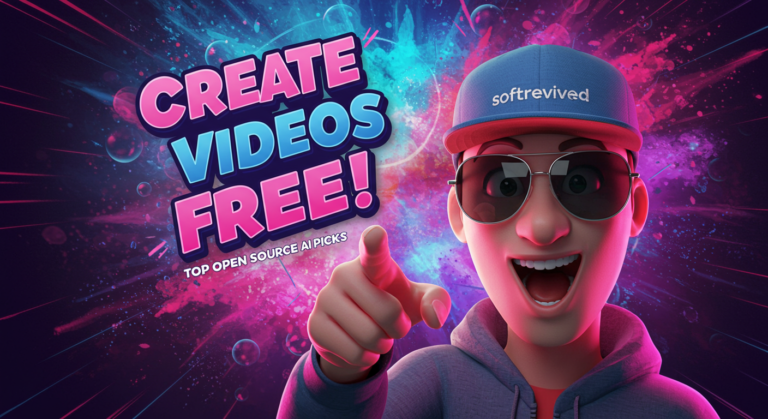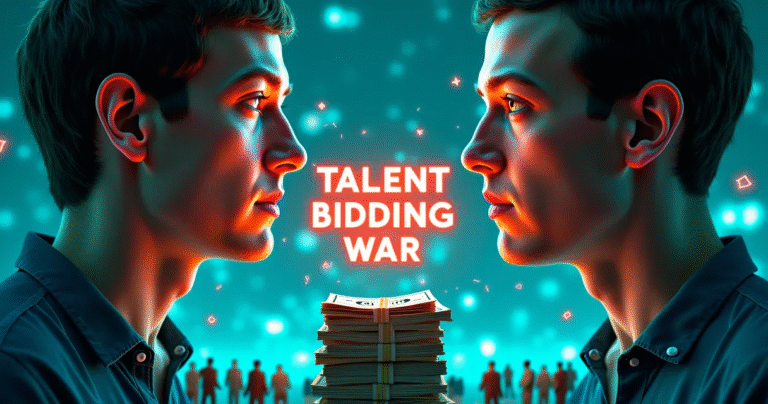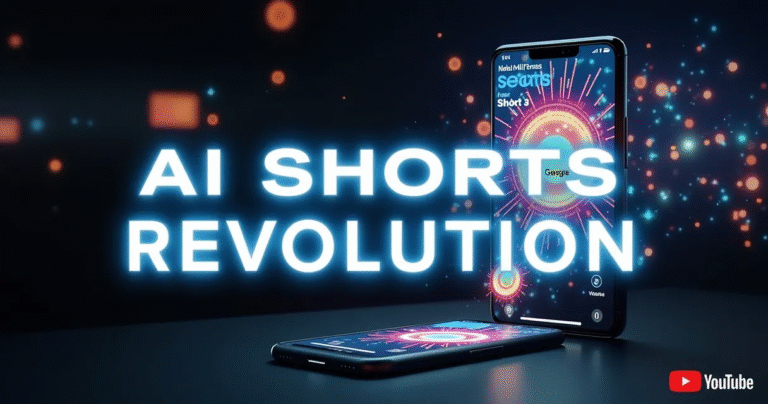🎥 Open-Source AI Video Generation Revolution
🚀 Next-Gen Open Source Models
Genmo Mochi 1 and Rhymes Allegro emerge as powerful open-source AI video generators, surpassing proprietary models in quality and performance.
🏆 Superior Performance
Genmo Mochi 1 demonstrates exceptional capabilities, outperforming Runway Gen 3 and Cling 1.0, with only Minimax showing better results.
⚡ Technical Excellence
Rhymes Allegro creates impressive 6-second videos at 15fps in 720p resolution, with plans for image-to-video conversion and extended video generation.
💰 Cost-Effective Solutions
Open-source alternatives deliver premium quality without subscription costs, challenging established platforms like OpenAI Sora and Runway.
🌟 Democratizing AI
These open-source models mark a significant shift towards making high-quality AI video generation accessible to a broader audience.
📈 Market Disruption
Rapid advancement in open-source video generation technology is reshaping the market, offering premium capabilities without subscription fees.
The world of AI-powered video generation is rapidly expanding, offering increasingly sophisticated tools to creators of all backgrounds. This article provides a comprehensive overview of prominent open-source AI video generators, including LTX Video, Mochi 1, and Hunyuan AI, examining their capabilities, pricing, performance benchmarks, and their respective strengths and limitations. We aim to help you navigate this landscape and choose the right option for your needs.
The Rise of Open Source AI Video Generation
Open-source AI video generators have revolutionized content creation, offering accessible and cost-effective alternatives to traditional proprietary software. These models empower users to transform text or images into captivating videos, fostering creativity and innovation. The core concept is that the source code is available to use and modify, which encourages community driven improvements.
LTX Video: Real-Time Video Generation
LTX Video, developed by Lightricks, stands out for its real-time video generation capabilities. It provides both text-to-video and image-to-video functionalities, making it a quick and easy tool for generating videos. The fact that it operates in real-time makes it stand out from some other AI video generation tools.
- Key Advantages: Real-time generation, easy to use.
- Key Disadvantages: May not be as feature rich compared to some other models.
- Access: Accessible via the LTX Video Playground on Hugging Face.
You can explore the LTX Video playground and documentation directly from the Hugging Face Space.
Mochi 1: High-Performance Open-Source Model
Genmo's Mochi 1 is recognized for its large 10 billion parameter architecture, positioning it as one of the largest open-source video models currently available. It’s known for strong prompt adherence and high motion quality. This large model tends to produce more sophisticated results, especially for complex prompts.
- Key Advantages: High motion quality, excellent prompt adherence, large model size.
- Key Disadvantages: Can be computationally intensive.
- Access: Available on the Genmo platform. You can try out Mochi 1 on their website and explore its capabilities.
Hunyuan AI: Tencent's Cinematic Video Generator

Tencent’s Hunyuan AI Video Generator is a robust model that offers high-quality cinematic video generation. It is notable for its ability to transition seamlessly between real and virtual styles and is built on a 13-billion-parameter diffusion transformer model.
- Key Advantages: High visual quality, smooth transitions, detailed scenes.
- Key Disadvantages: Can be slightly more complex to use compared to some models.
- Access: Available through FAL.ai, Replicate, and a Google Play Store app.
Detailed Comparison Table
Here’s a breakdown of key features, pricing, and benchmarks:
| Feature | LTX Video | Mochi 1 | Hunyuan AI (Fal.ai) | Hunyuan AI (Replicate) | Hunyuan AI (Google Play App) |
|---|---|---|---|---|---|
| Model | Open Source | Open Source | Open Source | Open Source | Proprietary on a subscription plan |
| Architecture | Not explicitly detailed | 10 billion parameter | 13 billion parameter | 13 billion parameter | Not specified in detail |
| Video Generation | Text-to-video, image-to-video | Text-to-video | Text-to-video, image-to-video | Text-to-video, image-to-video | Text-to-video, image-to-video |
| Speed | Real-time | Moderate | Moderate | Moderate | Moderate |
| Motion Quality | Good | Excellent | Excellent | Excellent | Excellent |
| Text Alignment | Not explicitly detailed | Not explicitly detailed | Up to 68.5% | Up to 68.5% | Up to 68.5% |
| Visual Quality | Good | Excellent | 96.4% (human evaluation) | 96.4% (human evaluation) | 96.4% (human evaluation) |
| Access | Free | Free | Paid (per video) | Paid (per run) | Optional Subscriptions |
| Usage | Unlimited | Limited by compute | Credits | Credits | Unlimited with subscription |
| Pricing | Free | Free | ~$0.40/video | ~$0.70/run | Basic: $4.99, Standard: $9.99, Pro: $29.99, Premium: $49.99 |
| Notable Strengths | Real-time, ease of use | High motion quality, prompt adherence | High visual quality, detailed transitions | High visual quality, detailed transitions | User-friendly app, wide range of features |
| Notable Limitations | May not be feature rich | Can be computationally intensive | Can be more complex | Can be more complex | Subscription pricing |
Analyzing the Advantages and Disadvantages
Here's a more detailed look at the pros and cons:
LTX Video
- ✅ Advantages:
- Real-time video generation is very fast.
- Easy to use with a user-friendly playground.
- ⛔️ Disadvantages:
- May lack the more advanced features found in other models.
- Potential for lower quality video generation results compared to other models in specific use cases.
Mochi 1
- ✅ Advantages:
- Exceptional motion quality.
- Excellent adherence to prompts.
- Large 10 billion parameter model architecture.
- ⛔️ Disadvantages:
- Can be computationally intensive.
- Requires more resources to run smoothly.
Hunyuan AI
- ✅ Advantages:
- High-quality cinematic videos.
- Smooth transitions between real and virtual styles.
- Available through multiple access points.
- ⛔️ Disadvantages:
- Can be slightly more complex to use compared to other models.
- Cost can vary depending on the platform.
Pricing Breakdown
While the models themselves are often open-source, the platforms offering access might involve costs:
- LTX Video and Mochi 1: Both offer free access through their playgrounds.
- Hunyuan AI (Fal.ai): Operates on a credit system, with costs typically around $0.40 per video.
- Hunyuan AI (Replicate): Also operates on a credit system and costs roughly $0.70 per run.
- Hunyuan AI (Google Play App): Offers optional subscription plans with varying price tiers.
Keep in mind that self-hosting these models can require substantial hardware resources, which can add significant costs.
The Road Ahead
The open-source AI video generation space is poised for continued growth. 🚀 Here's what we can anticipate:
- Enhanced Accessibility: More user-friendly interfaces and more diverse avenues to access the technology.
- Continuous Improvement: Ongoing development and improvements to video quality, motion, and prompt accuracy.
- Community-Driven Innovation: Further collaboration and advancements within the open-source community.
- Lower Barrier to Entry: Easier and more accessible video creation for various audiences.
How Do AI Benchmarks Impact the Performance of Open Source AI Video Generators?
AI benchmarks play a crucial role in evaluating the effectiveness of open source AI video generators. By establishing standard metrics, developers can measure performance improvements and refine algorithms. For those new to the field, exploring ai benchmarks for beginners can provide valuable insights, fostering innovation and enhancing the quality of video outputs.
Wrapping it Up
The open-source AI video generator market, with models like LTX Video, Mochi 1, and Hunyuan AI, offers diverse choices for video creation. Each model presents different features, benefits, and limitations. By understanding these differences, you can choose a tool that aligns with your specific needs and technical abilities. 👉➡️ The future of AI video generation is shaping up to be diverse, open, and innovative. You can find more information on Hunyuan Video at the official Tencent Hunyuan Video Page.
AI Video Generator Pricing & Features Comparison
Comparison of popular AI video generators showing their monthly pricing tiers and maximum video duration limits.







